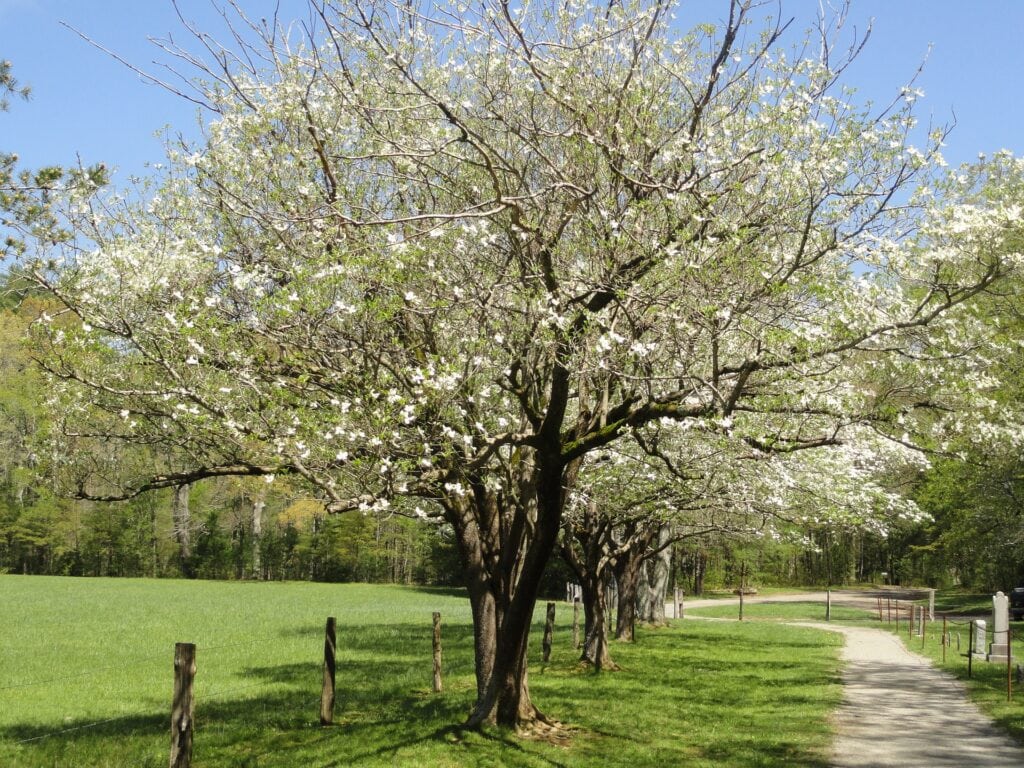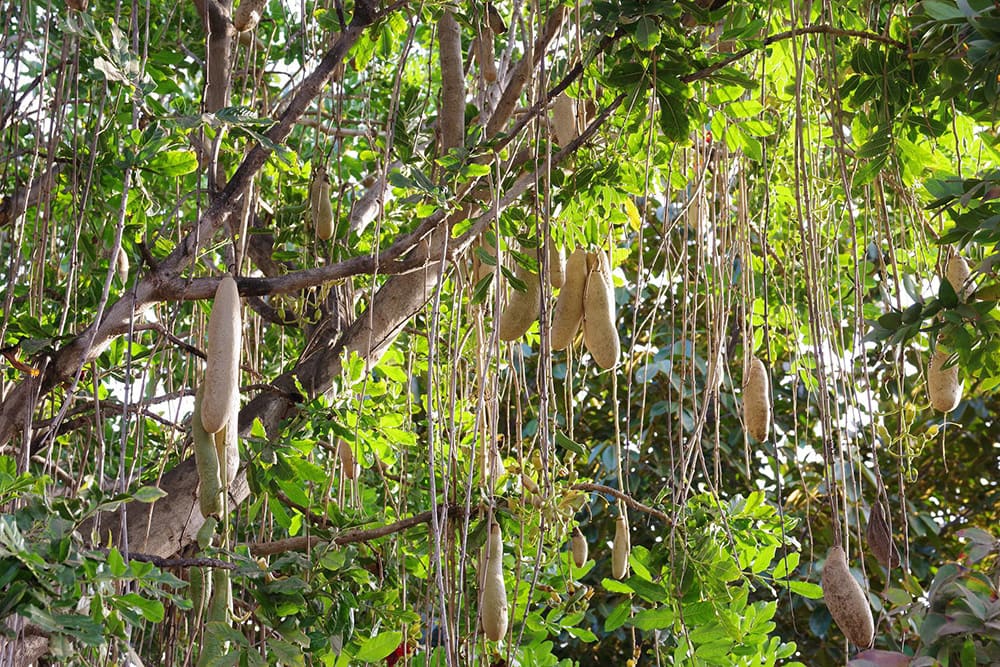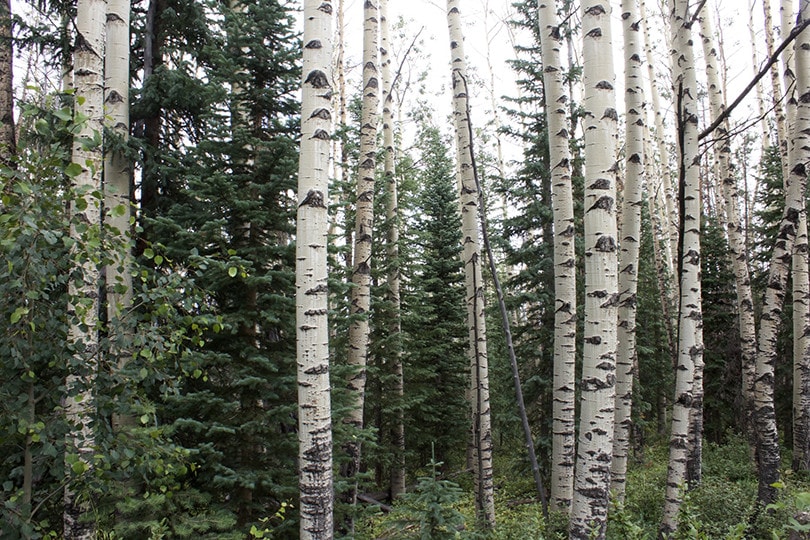20 Impressive Facts About Trees & Forests: History & Benefits
-

- Last updated:

Trees and forests are one of the planet’s most intriguing natural formations, covering most of the Earth’s ground and airspace with gorgeous hues of green weaved perfectly with layers of biodiversity and fascinating secrets that a lot of us have yet to learn. Their critical role on our planet cannot be overemphasized, and the respect they deserve is vital for the world’s survival.
There is so much more to these spectacular plants other than providing shelter, food, and shade, and our deep connection with them has lived through lifetimes.
In this article, we will delve into impressive facts about trees and forests to understand their marvel.
The 20 Facts About Trees & Forests
1. Forests Cover 31 % of the Global Land Area
Forests cover 31% of the global land area. That is 4,06 billion hectares, but the coverage varies in different regions of the planet. Over one-third of forest areas are primary forests, which have not been disturbed; more than half are found in only five countries, and two-thirds are located in 10 countries.

2. In One Year, A Mature Tree Will Absorb More Than 48 Pounds of Carbon Dioxide from The Atmosphere
Trees absorb carbon dioxide and water and use the sun to convert them into chemical compounds that feed the tree through a process known as photosynthesis. Carbon dioxide is also stored in the tree’s fibers, which cleans the air and reduces the negative impact that CO2 would otherwise have.
It is said that a single mature tree will absorb more than 48 pounds of carbon dioxide in a year, converting it to oxygen. This life-giving quality may explain why many humans choose to hug a tree, so the next time you see one, take a deep breath and give it an embrace of gratitude.
3. Trees Redistribute Up to 95% of The Water They Absorb
The root systems of trees absorb water when it rains, which helps to reduce flooding and soil erosion. The water is carried through their roots to tiny pores on the underside of their leaves, where it converts to vapor and is released into the atmosphere, redistributing up to 95% of the water they absorb.

4. There Are Over 73,300 Tree Species in The World
Researchers released data from the world’s largest forest database, calculating over 44 million individual trees at over 100,000 sites in 90 countries. They concluded that Earth has approximately 73,300 tree species. The Amazon rainforest and far-flung Andean forests were discovered to contain 43% of the world’s tree species and the highest number of rare species, with approximately 8,200.
5. Trees Didn’t Exist for The First 90% of Earth’s History
Earth is estimated to be 4.56 billion years old, and only bacteria, fungi, and algae could survive the earth’s bare land, while everything else inhabited the ocean. It is said that the first plants populated the world between 450 million and 500 million ago. Researchers discovered that two large genes, unseen in previous plant relatives, were present in plants that had transitioned onto the land, and the appearance of these new genes drove the evolution of land plants.

6. Trees are The Longest Living Organisms
Earth is abundant in life forms that have been around for thousands of years, and many of these are trees. The oldest trees are 2,000-5,000 years old and provided shelter and food for some of the earliest human civilizations.
The White Mountains of California are home to the world’s longest-living organism. The Great Basin bristlecone Pine is found clinging to the soil where it has overcome harsh living conditions for over 5000 years. If you think you could get a glimpse of this phenomenon, think again, because scientists have kept its exact location under wraps to ensure visitors do not damage it.
7. Some Trees Have Been to The Moon
When Apollo 14 launched into space in January 1971, a former forest serviceman, Stuart Roosa, had a container with hundreds of seeds of five trees as part of a project between NASA and the Forest Service. They wanted to see if the moon’s orbit would affect the growth of the trees back on Earth. When they returned to Earth, the forest service germinated the seeds, and the “Moon Trees” were planted around the United States and the world.

8. Tree Rings Can Predict Climate Change
Trees can live for hundreds of years, withstanding and witnessing various weather conditions. The rings of the tree’s stump can tell us how old a tree is and how the weather played out for each year of its life! The light-colored rings represent spring and early summer growth, while the dark rings represent late summer and fall growth. One year of the tree’s life equals one light ring plus one dark ring. This gives scientists information about the past’s local climate patterns that they can compare to temperature measurements with modern trees. This information can assist researchers in predicting climate patterns for the future.
9. Forests Are The Lungs of Our Land
Forests are the lungs of our land because they absorb carbon dioxide and release the oxygen that we breathe and are, therefore, crucial to our survival. As Franklin Roosevelt said, “Forests are the lungs of our land, purifying the air and giving fresh strength to our people.”

10. Forests are home to 80% of The Earth’s Biodiversity
Forests are home to at least three-quarters of the Earth’s life on land. 80% of the world’s animals, plants, fungi, and bacteria inhabit the forests, and they account for nearly two-thirds of all plants, three-quarters of all birds, 80% of all amphibians, and 68% of all mammals. There are about 750 million people that live in forests, too, with about 60 million of them being indigenous people.
11. Forests Are Nature’s Medicine Cabinet
Science has discovered numerous medical benefits from Amazon rainforest plants and animals, and there are still many secrets to be revealed. More than 60% of anticancer drugs are derived from natural sources, and many pharmaceutical products are acquired from tropical forest species. For example, the Brazilian Social Wasp is said to produce a venom that can kill cancer cells.
Some are synthesized, while others are still collected in their natural, wild state. Approximately 80% of the world’s population relies on plant-derived compounds for medicines to treat various ailments.

12. Trees and Fungi Are Friends
All trees are connected through underground mycorrhizal networks, which they use to share nutrients and water. The root tips of the trees connect with the fungal filaments, which is how they connect in a symbiotic relationship. The fungi consume about 30% of the sugars photosynthesized by the trees, which are the fungi’s fuel. The fungi hunt for minerals, such as nitrogen and phosphorus, which the trees absorb and consume.
13. Some Trees Can Fight off Pests and Warn Surrounding Trees Against Attack
Tree roots and fungal networks can detect subtle electromagnetic fields generated by other trees and transmit warnings when dangers exist. They use chemicals and scents to warn each other of possible danger, deter predators, and attract beneficial insects to pollinate or eliminate invasive pests. They can connect with trees at far distances and even share nutrients with trees close by to assist with the attack.

14. Trees Can Close Off Wounds
Trees have a natural process of isolating a wound or diseased area from the rest of the tree, known as the compartmentalization of decay in trees. The tree will use some of its stored sugars to produce a variety of defensive chemicals, which it then distributes and deposits internally around the wound in a specific pattern. This process allows the tree to resist the entry of any pathogens into the exposed wood.
15. Trees and Forests Are Beneficial to Our Health and Wellbeing
There is a deeper reason humans are drawn to forests and why we feel so good after spending time in one. Trees give off phytoncides to protect themselves are airborne chemicals that help fight disease. We breathe in those phytoncides, and our body responds by increasing white blood cells, which boost our immune system. Forest bathing is a popular activity thanks to the ability of trees to reduce stress levels and blood pressure. Getting out into nature or the forest can help you refocus, recharge, and feel calm.

16. The U.S has 20% More Trees Than It Had on the First Earth Day Celebration Over 40 Years Ago
Although agricultural growth in the tropics has devoured vast rainforest areas, climate change has allowed more new trees to grow in previously inhospitable places. Research suggests that new trees cover 7% of the Earth’s surface. Records show that although tree coverage has been deleted due to deforestation and urbanization, the gain in tree coverage far outweighs the loss.
17. Different Parts of a Tree Grow at Different Times of The Year
Different parts of a tree begin growing at different times during any growing season. The three growing parts of the tree are the buds, root tips, and cambium layer. Buds lengthen the branches and widen the crown, the cambium layer increases the tree’s diameter, and the root tips lengthen to support the tree’s growth.
Most tree growth takes place between late spring and early summer. Flowers typically become fruit in late spring and early summer, and the crown develops a full canopy of leaves, and a new layer of wood is added around the trunk, branches, and roots, known as tree rings.

18. It Can Take Up to Ten Minutes for A Raindrop to Fall from The Forest Canopy to The Floor
The canopy of a rainforest is so dense with flora and fauna that it can take at least 10 minutes for a raindrop to fall to the floor. The canopy acts as a shield, and a 4-square-mile patch can contain up to 1,500 flowering plants, 750 tree species, 400 bird species, and 150 butterfly species.
19. The United States Has the Fourth Largest Forest Estate in the world
The USA has about 304 million hectares of forest land that covers up to a third of the land area, which includes about 8% of the world’s forests. 56% of forest land is owned privately, while tribes and state and federal governments manage the rest. These forest lands include boreal, deciduous, dry coniferous, temperate, and tropical rainforests and pine plantations.

20. Trees Rest Their Branches at Night
Research shows that some trees droop their branches by 10 centimeters at night. Scientists are still not convinced that it is due to water balance, loss of sunlight, or energy conservation and may suggest that trees rest at night. Trees also hibernate in winter.
They repatriate chlorophyll and starch from their leaves before releasing them to the ground in the autumn. This ensures that the trees do not waste energy during the coldest months. The starch is converted to sugar, which serves as an antifreeze agent while keeping the tree alive.
•You might also like:Can You Burn Leaves in a Fire Pit? Is It Safe?
•You might also like: 21 Most Common Types of Butterflies in California
•You might also like: 14 Most Common Types of Butterflies in Indiana
•You might also like: 4 Most Common Types of Butterflies in Oregon (With Pictures)
•You might also like: 10 Companion Plants for Rosemary (with Pictures)
•You might also like: 12 MOST COMMON TYPES OF BUTTERFLIES IN CONNECTICUT (WITH PICTURES)
Conclusion
We are sure you can agree that you will never see a tree in the same light again, and your respect and appreciation for these life-giving organisms have been deepened. Trees and forests provide so much more than a shady spot or a branch to climb; they provide jobs, medicine, shelter, homes, and, most importantly, life.
Next time you relax under the canopy of a tree or stroll through a breathtaking forest, take a moment to reflect. While all these facts are awe-inspiring, we must remember that deforestation is real and fast-moving, and we must do what we can to preserve our trees and forests.
- https://www.woodlandtree.com/terrans-tips/posts/fun-facts-about-trees
- https://www.ecowatch.com/forest-facts-2646992339.html
- https://www.precisiontreemn.com/tips/14-fun-facts-about-trees.html
- https://onetreeplanted.org/blogs/stories/facts-about-trees
- https://www.worldwildlife.org/initiatives/forests#
- https://www.treehugger.com/facts-about-trees-4868798
- https://standfortrees.org/blog/forest-facts/
- https://www.weforum.org/agenda/2022/02/world-tree-species-forest-deforestation-climate-change
- https://www.fao.org/state-of-forests/en/
- https://www.usda.gov/media/blog/2015/03/17/power-one-tree-very-air-we-breathe
Featured Image Credit: Sharon Snider, Shutterstock
Contents

